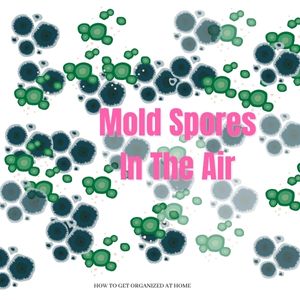My Windows Are Sweating And Causing Mold
When it comes to home maintenance, it’s easy to overlook your windows. If it looks like your windows are sweating and causing mold then you really do need to take action.
While some homeowners assume that window condensation is caused by rain or humidity, the truth is that sweating windows can be a sign of a bigger problem.
Not only can this issue cause discomfort, but it can also lead to mold growth which can be a serious health hazard.
When you think about these mold removal tips and what is happening with your windows you can put together a plan that will help you resolve the problem.

In this blog post, we’ll explore why windows sweat and what you can do to stop it from happening.
Why Is My Window Sweating?
It’s not seat but condensation on windows is a result of the difference in temperature between the inside and outside of your home.
When the temperature inside your home is warmer than the temperature outside, moisture will start to form on your windows.
This is because warm air can hold more moisture than cold air, and when the warm air comes into contact with the cold glass, it cools down, and water droplets form.

This is the same process that causes dew to form on grass or cars in the morning.
Affiliate links are included for your convenience. (This means if you purchase after clicking a link I will earn a small commission which won’t cost you a penny more!) Click here to read my full disclosure and privacy policy.
What Causes Condensation?
However, sometimes sweating windows can be caused by other factors.
For example, if you have a high humidity level in your home, your windows may be more likely to sweat.
Additionally, if your windows are old or poorly insulated, they may be more prone to condensation.
But with condensation comes mold and this isn’t a good thing to have growing in your home.
The Dangers of Mold
Mold is a type of fungus that can grow in damp and humid conditions.
When windows sweat, the moisture can create the perfect environment for mold to grow.
Not only can mold damage your home, but it can also pose a serious health risk, especially for people with asthma or allergies.

Mold spores can cause respiratory problems, eye irritation, and even skin rashes.
If you start to notice mold growth on your windows or walls, it’s important to address the issue as soon as possible. Not only can mold spread quickly, but it can also be difficult to remove.
How to Prevent Condensation
The best way to prevent window sweating is to reduce the amount of moisture in your home.
Here are some tips to help you do that:
1. Use a Dehumidifier: One of the most effective ways to reduce moisture in your home is to use a dehumidifier. A dehumidifier works by removing excess moisture from the air, which can help prevent window condensation and mold growth. Be sure to choose a dehumidifier with the appropriate capacity for your home size.
2. Properly Ventilate Your Home: Proper ventilation is key to reducing moisture in your home. Make sure that your home is properly ventilated by opening windows or using exhaust fans in the kitchen and bathroom. This can help to circulate air and reduce humidity levels.
3. Install Weatherstripping: Installing weatherstripping around your windows can also help to reduce the amount of cold air that enters your home. This can help to keep your windows warmer and reduce the likelihood of sweating.

4. Use Window Coverings: Window coverings, such as blinds or curtains, can also help to reduce window sweating. By keeping the cold air away from your windows, you can help to keep them warmer and reduce the likelihood of condensation.
5. Upgrade Your Windows: If your windows are old or poorly insulated, they may be more prone to sweating. Consider upgrading your windows to reduce the likelihood of condensation. Look for windows that are energy-efficient and have a high insulating value.
Condensation On Your Windows Is Annoying
Window sweating can be a frustrating problem, but it’s important to take it seriously.
By understanding why it happens and taking steps to prevent it, you can keep your home comfortable and safe.
If you’re experiencing window sweating and mold growth, it’s important to address the issue as soon as possible to avoid any health hazards.
By following the tips above, you can reduce the amount of moisture in your home and prevent window sweating from happening in the first place.
Remember, prevention is key when it comes to maintaining a healthy and comfortable home. By taking care of your windows and reducing moisture levels, you can help to prevent a variety of issues, including window condensation and mold growth.
If you’re unsure about the cause of your window sweating, be sure to consult with a professional who can help you identify the root of the problem and provide solutions.
More Resources To Help You Fight Mold
It’s worth noting that sweating windows can be a seasonal problem.
In the colder months, when temperatures drop, it’s not uncommon for windows to sweat. However, if you notice excessive sweating or mold growth, it’s important to take action to prevent any potential health hazards.
By being proactive and taking care of your windows, you can keep your home comfortable, healthy, and safe throughout the year.









